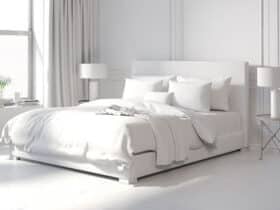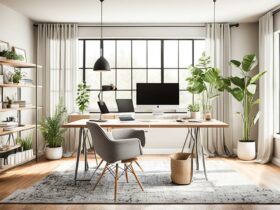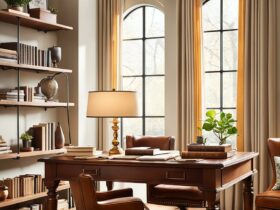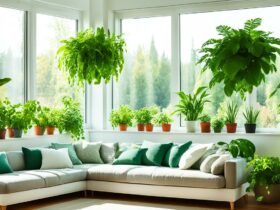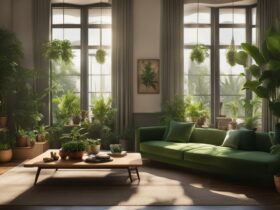Contemporary interior design is a dynamic and evolving field that focuses on creating modern and stylish living spaces. It emphasizes simplicity, clean lines, and a harmonious balance between form and function. In this article, patricktopping will explore the art of contemporary interior design and delve into its key principles, elements, and techniques that can transform any space into a modern masterpiece.
Defining Contemporary Interior Design
Contemporary interior design refers to the style that is currently popular and in vogue. It embraces the present time, drawing inspiration from modern trends, technology, and cultural influences. Contemporary design is characterized by its sleek and streamlined appearance, creating spaces that feel open, airy, and uncluttered. It takes a minimalist approach while still maintaining a sense of warmth and comfort.
The Key Principles of Contemporary Interior Design
Minimalism: Less is More
Minimalism lies at the heart of contemporary interior design. It emphasizes simplicity and the elimination of unnecessary elements. Clean, uncluttered spaces are achieved by selectively choosing furniture, accessories, and decorations. This principle promotes a sense of serenity and orderliness within the space.
Clean Lines and Geometric Shapes
Clean lines and geometric shapes are hallmarks of contemporary design. Straight lines and sharp angles create a sense of precision and order. From furniture to architectural details, these elements contribute to the sleek and modern aesthetic of contemporary interiors.
Neutral Color Palette with Bold Accents
Contemporary design often employs a neutral color palette as a backdrop, including shades of white, gray, and beige. These neutral tones create a sense of calmness and provide a versatile base for incorporating bold accents. Pops of vibrant colors are strategically used to add visual interest and create focal points within the space.
Emphasis on Open Space and Natural Light
Contemporary interiors aim to maximize the use of open space and natural light. Walls are kept to a minimum, and rooms are designed to flow seamlessly into one another. Large windows and skylights are utilized to invite ample natural light, creating an airy and bright atmosphere.
Integration of Technology
Contemporary design embraces technological advancements and seamlessly integrates them into the living environment. Smart home systems, automated lighting, and innovative appliances are just a few examples of how technology is incorporated to enhance functionality and convenience.
Elements of Contemporary Interior Design
Furniture and Accessories
Furniture in contemporary design showcases clean lines and minimal ornamentation. Sofas, chairs, and tables often feature smooth surfaces and geometric shapes. Accessorizing is done sparingly, with a focus on functional and visually appealing pieces that complement the overall design.
Flooring and Wall Treatments
Contemporary interiors typically feature flooring options such as hardwood, polished concrete, or large-format tiles. These flooring materials provide a sleek and timeless look. Walls are often painted in neutral colors or adorned with textured wallpapers to add depth and interest.
Lighting Fixtures
Lighting plays a crucial role in contemporary design, as it enhances the overall ambiance and highlights key design elements. Recessed lighting, pendant lights, and track lighting are commonly used to create layers of light. Fixtures with clean and modern designs are preferred to complement the overall aesthetic.
Artwork and Decorative Objects
Contemporary interiors often incorporate artwork and decorative objects as focal points. Large, bold artwork with abstract or geometric designs can make a striking statement. Sculptures, vases, and other curated pieces are carefully selected to add personality and visual interest to the space.
Textures and Materials
Contemporary design thrives on the interplay of different textures and materials. Smooth and shiny surfaces, such as glass, stainless steel, and polished wood, are juxtaposed with textured elements like natural stone, textured wallpapers, or woven fabrics. This combination adds depth and tactile interest to the overall design.
Techniques for Achieving Contemporary Interior Design
Open Floor Plans
One of the key techniques in contemporary interior design is the use of open floor plans. Walls are minimized or eliminated to create a seamless flow between different areas of the home. This open layout enhances the sense of space and allows for better interaction and communication.
Functional Furniture Arrangement
Contemporary design emphasizes functionality and practicality. Furniture is arranged strategically to maximize space and facilitate ease of movement. Each piece is carefully chosen for its purpose and contribution to the overall design concept.
Use of Mirrors to Create Illusion of Space
Mirrors are a clever technique used in contemporary design to create an illusion of space and reflect natural light. They can be strategically placed to visually expand a room and add depth. Mirrored walls, mirrored furniture, and large mirrors as decorative accents are commonly used in contemporary interiors.
Incorporating Sustainable Design Practices
Contemporary interior design also focuses on sustainability and environmentally friendly practices. Using eco-friendly materials, energy-efficient lighting, and incorporating natural elements like indoor plants are all ways to embrace sustainable design principles within a contemporary space.
Mixing Different Textures and Materials
To create visual interest and a dynamic atmosphere, contemporary design encourages the mixing of various textures and materials. Combining smooth and rough surfaces, glossy and matte finishes, and contrasting elements adds depth and dimension to the space.
Case Studies: Inspiring Examples of Contemporary Interior Design
Urban Loft Apartment
An urban loft apartment showcases an open floor plan, exposed brick walls, and high ceilings. The furniture is sleek and modern, featuring a combination of leather and metal accents. Large windows allow for abundant natural light, and statement artwork adds a splash of color.
Minimalist Scandinavian Home
A minimalist Scandinavian home incorporates a neutral color palette with natural wood accents. Furniture is functional and uncluttered, with clean lines and a focus on comfort. Simple yet impactful lighting fixtures create a cozy and inviting atmosphere.
Industrial-Chic Workspace
An industrial-chic workspace combines raw materials like concrete, metal, and exposed pipes with modern furniture and accessories. Open shelving and minimalist desk setups create a sense of order and functionality. Task lighting and overhead pendant lights illuminate the space.
Zen-Inspired Retreat
A Zen-inspired retreat embraces minimalism and a tranquil ambiance. Neutral colors, natural materials, and clean lines are key elements in this design. Indoor plants, water features, and soft lighting contribute to a serene and calming atmosphere.
Mid-Century Modern Revival
A mid-century modern revival incorporates iconic design pieces from the 1950s and 1960s with contemporary elements. Clean lines, organic shapes, and bold colors are characteristic of this style. Retro-inspired furniture and unique decorative accents create a nostalgic yet modern look.
Conclusion
Contemporary interior design is an art form that combines style, functionality, and innovation. By following the key principles, incorporating the right elements, and using effective techniques, anyone can create a modern and visually appealing living space. Embracing simplicity, clean lines, and open spaces, contemporary design offers endless possibilities for creating unique and inviting interiors.
Frequently Asked Questions
1: Can I incorporate traditional elements into contemporary interior design?
Yes, you can incorporate traditional elements into contemporary interior design. The key is to strike a balance and carefully select elements that complement the overall aesthetic. For example, you can incorporate traditional artwork or vintage furniture pieces to add character and create an eclectic vibe.
2: Is contemporary design suitable for small spaces?
Yes, contemporary design is well-suited for small spaces. Its emphasis on open floor plans, minimalism, and the use of natural light can make a small space feel larger and more spacious. Choosing multi-functional furniture and clever storage solutions can further optimize the available space.
3: What are some popular color schemes in contemporary interior design?
Neutral color schemes, such as shades of white, gray, and beige, are popular in contemporary interior design. They create a versatile backdrop for incorporating pops of vibrant colors as accents. Additionally, monochromatic color schemes, where different shades of a single color are used, are also commonly seen in contemporary design.
4: How can I incorporate technology into contemporary interiors?
To incorporate technology into contemporary interiors, consider integrating smart home systems that control lighting, temperature, and entertainment. Use sleek and modern electronic devices and appliances that seamlessly blend with the overall design. Concealing wires and cables can help maintain the clean and uncluttered aesthetic.
5: Are there any sustainable practices in contemporary interior design?
Yes, contemporary interior design encourages sustainable practices. Incorporating eco-friendly materials, energy-efficient lighting, and utilizing natural elements like indoor plants are all ways to embrace sustainability within a contemporary space. Additionally, choosing furniture and accessories made from recycled or upcycled materials is also a sustainable choice.
In conclusion, contemporary interior design offers a perfect blend of style, functionality, and innovation. By following the key principles, incorporating the right elements, and using effective techniques, you can create a modern and visually captivating living space. Whether you prefer minimalist Scandinavian designs or industrial-chic aesthetics, contemporary interior design allows for endless possibilities to transform any space into a work of art.


